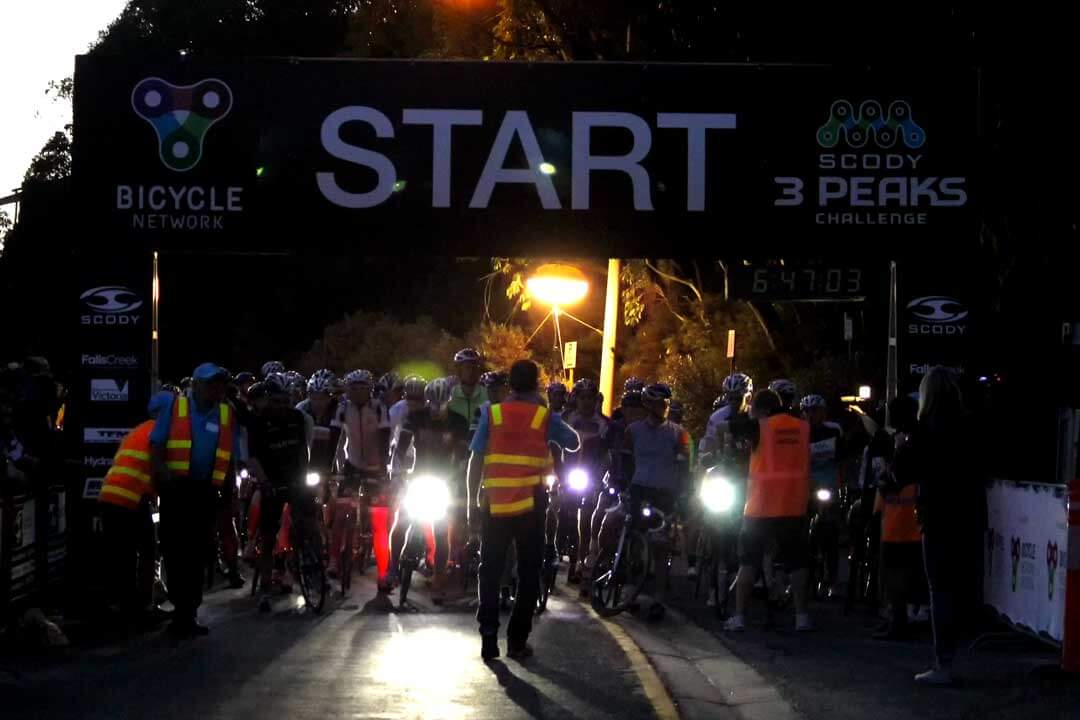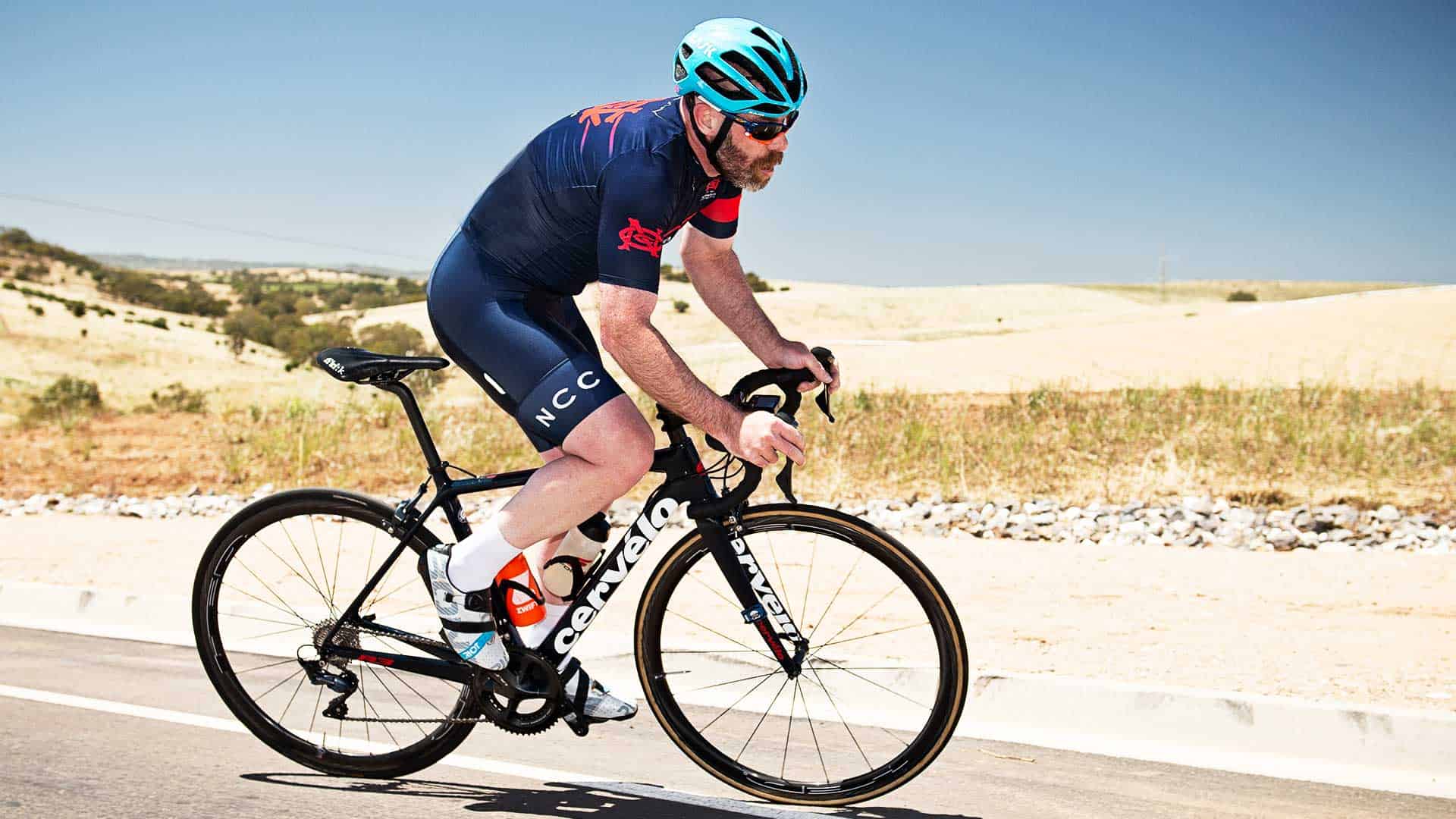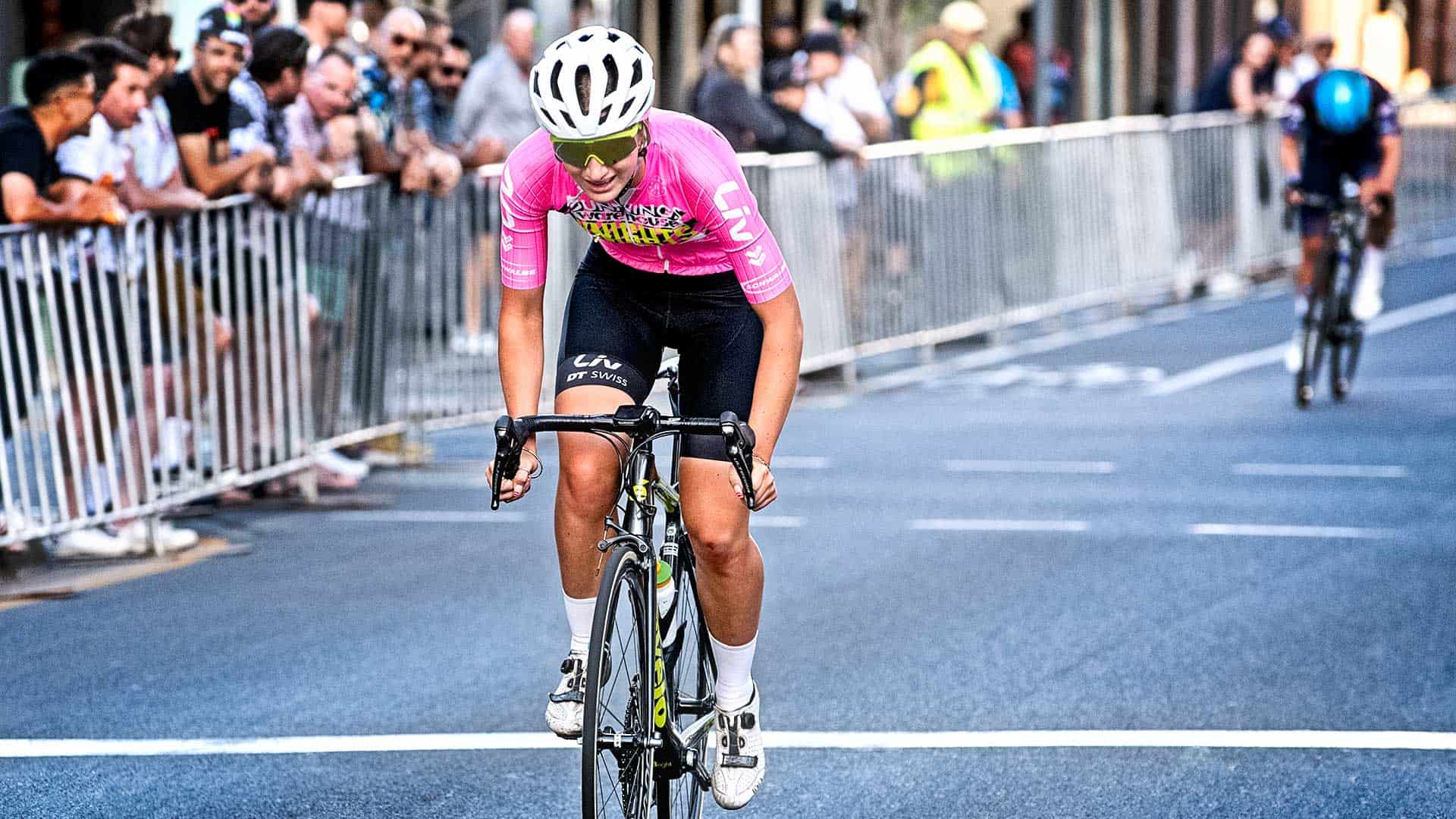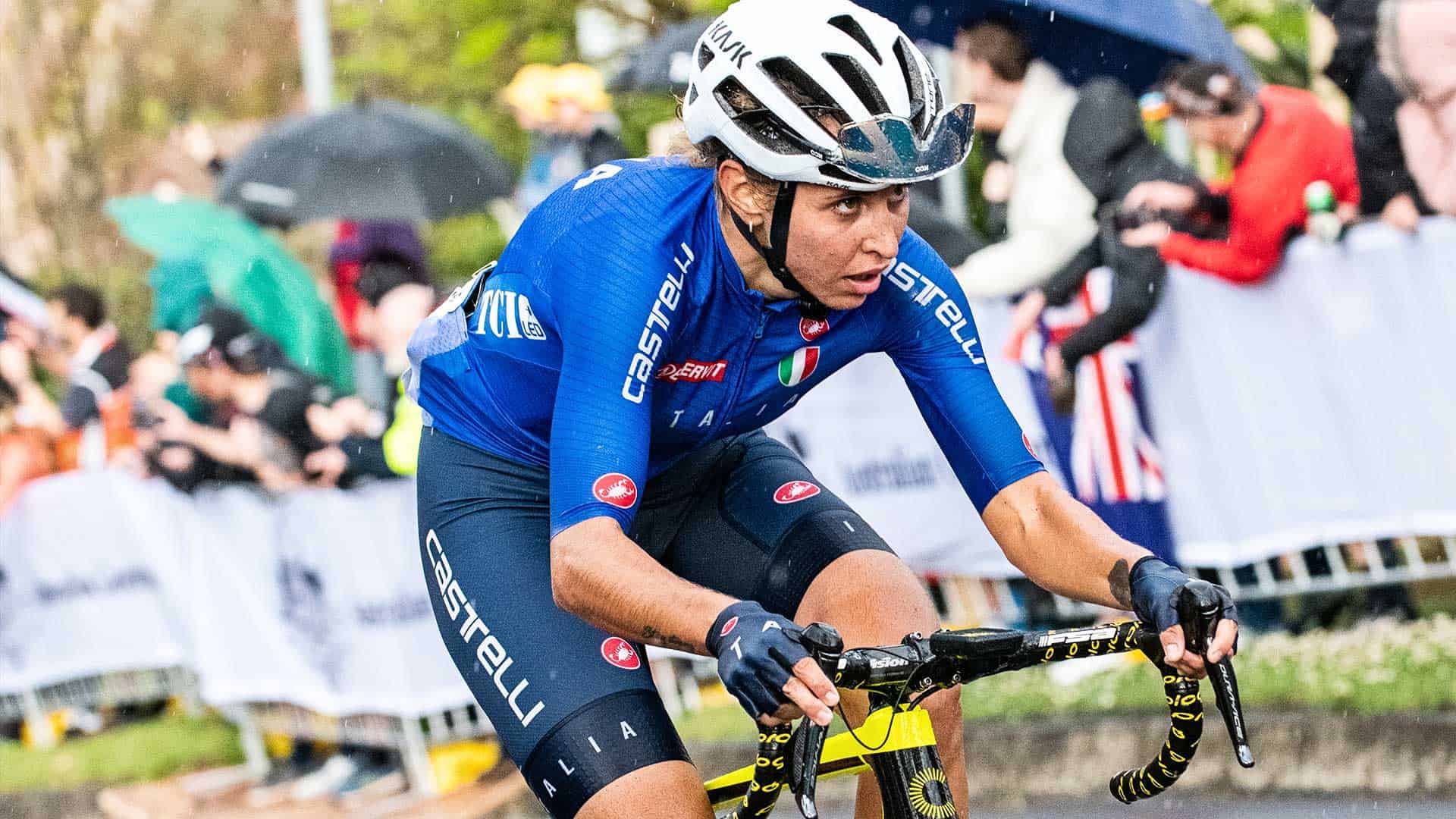 I’m going to be straight with you right now. The Peaks Challenge Falls Creek is not an event that you can cram your training in on the last few weeks leading up to it and expect to ride awesome on the day. In this second article I’ll discuss the first important steps you’ll need to take to ensure that you aren’t setting yourself up for failure before you even start your training. And in the article after this I’ll be telling you how you can then be super-efficient with your training so you can get the best results quickly, while not wasting your limited time.
I’m going to be straight with you right now. The Peaks Challenge Falls Creek is not an event that you can cram your training in on the last few weeks leading up to it and expect to ride awesome on the day. In this second article I’ll discuss the first important steps you’ll need to take to ensure that you aren’t setting yourself up for failure before you even start your training. And in the article after this I’ll be telling you how you can then be super-efficient with your training so you can get the best results quickly, while not wasting your limited time.
One of the issues that crops up with my clients is the worry of being able to fit in enough training leading up to the event. There are others. Like how to get faster at climbing. I’ll be providing you with several important “keys” along the way in future articles to help you unlock these issues.
But before I go into any of that let’s address this first one. The issue of finding the training time…
I was working with a client few years ago. He works in the legal industry and was training for the Grand Slam Challenge series. I gave him a customised training plan that worked his training around his busy schedule. And, I had weekly hook-ups with him to discuss progress, review his data and provide him with feedback. It kept him honest. He was going along nicely with his training. He was committed, enjoying it and getting results quickly. His first Grand Slam ride was a success. He did a personal best.
But then work got really really busy. He started to find it more and more difficult to get the training in. He wanted to do well in Grand Slam Challenge series. But, on some days he would wake in the morning knowing that he had many commitments to meet that day. And… one of them he wasn’t going to be able to do. So he started to skip sessions. But then it got worse. In less than two weeks he was down to one or two sessions a week. That’s all he could fit in. I was warning him he was heading for disaster. His scheduling conflicts were raging war on him.
Being driven, the individual he became frustrated. He wanted to do it all. But on the few rides he was able to get out on, instead of enjoying the ride, his head was filled with the thoughts of how he was letting down his clients, his family, his office staff. He had gotten to the point where he didn’t even have time to go out for these rides. And on top of that, in just a few weeks he had lost all the fitness he had gained. His second Grand Slam was a failure.
I knew what was happening so I called him on it. We talked. And I said this to him…
“We are not going for gold medals here. While some of our training is not enjoyable because it’s something that we do to ensure that we reach our cycling goals, the primary reason that we ride our bikes is because we enjoy it.”
It was clear that my client had gone beyond this point. For him, training had become a chore. It had become just another thing that he “had to do”. It ended up a major pain for him that piled up on top of everything else he had to deal with.
So I told him to stop training. Forget the Grand Slams. It was a hard thing to say but it needed to be said.
The bike had been a release for him. He used to get away from the stress of life. It was a time to be free. For him to enjoy the climbs, the high speed descents around Adelaide. To be hammering it out while the scenery raced past his eyes in a blur of adrenaline. Something that he could apply himself to and for him to take pleasure from as he saw himself improve and get better.
I reminded him of this. I told him that the bike would always be there for him but he needed to just get out there and enjoy the ride. No stress. When he had the time.
It’s a big problem with high achievers. They want to take it all on. They thrive on the challenge of cramming it all in. But in doing so they start to progressively run out of time. So they compromise and take short cuts. They can “wing it” for a while. In a lot of areas in their life, they get away with it because they have become so skilled and efficient at doing it. Masters of it. But building fitness is not like that. You need to nurture it, consistently and regularly to get results. It’s inevitable though. Somewhere along the way, that compromise will result in failure… The scheduling conflicts will finally win and you will lose.
The first thing you need to know before starting to train for the Peaks Challenge Falls Creel is how much training you need to do to be successful? It’s the starting point.
The great thing is that I’ve already done a lot of the initial hard work for you. I’ve created a sub 13 hour, 12 week training plan for you based on my experience working with athletes like you that have limited amounts of time to train for events like the Peaks Challenge Falls Creek.
In it, I’ve already worked out how much training and what sort of training you’ll need to do week by week in your build-up to the Peaks Challenge Falls Creek. The training plan can be downloaded using the link at the bottom of this article. It’s your first key to unlocking your successful training campaign in your lead up to the Peaks Challenge Falls Creek.
All you have to do is get your diary out and find out if you have any up and coming work events, social gatherings, meetings and family commitments that are going to conflict with your training plan. And… rather than blindly kicking off your training in a hope that you’ll sort out these scheduling conflicts when they arises, you address them before you start.
Once you have done this, work out who is going to be impacted by your training schedule then go to each of these “stakeholders” and get their buy-in well ahead of time.
Picture this, it’s 5:30 am on a Saturday morning and you are pumping up your tires ready to go out for a ride. You are confronted by your partner who reminds you of your commitment to taxi the kids to their sporting event at 7:30 am. Starting your negotiations now is not going to result in a very unfavourable outcome. And… whatever outcome you do reach in the garage will usually impact on any future negotiations to do with your training time down the track.
You want the people around you supporting you rather than becoming your roadblock.
By going through this stakeholder buy-in process you’ll have a very clear idea how achievable you’ll be at committing to the training. You’ll quickly identify commitments at work and at home that you need to say NO to. If you are unable to negotiate at least 80% of the training recommended in the program then I would seriously think carefully about riding the Peaks Challenge Falls Creek. If you can’t resolve these conflicts you’ll probably end up like the client in this story; frustrated, not enjoying your riding and letting down the people around you.
So there you have it. Stakeholder buy-in. Get it right and you’ll fly through your training with ease. Get it wrong and you could be facing a nasty disagreement with your family, friends or boss or perhaps all three.
Download your first key, you copy of the Peaks Challenge Fall Creek 12 week training program here
In the next article, I’ll be talking about how to make your training super-efficient so that you can maximise the limited time you have and get the greatest training effect from it. It’s your second key to unlocking your successful training campaign in your lead up to the Peaks Challenge Falls Creek. You’ll get it sent to you in an e-mail in a few weeks’ time but you have to click on the link above and download the program first to get it.





Leave A Comment